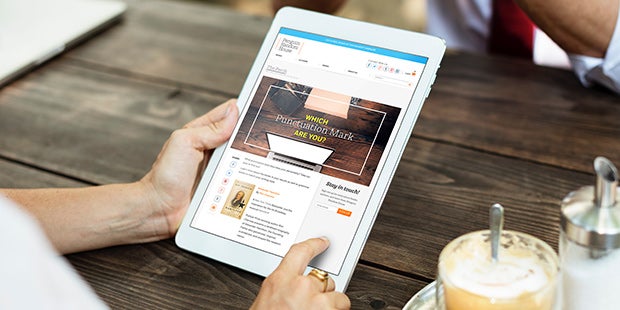As we’ve mentioned before, a newsletter can be a vital part of your marketing campaign. At Penguin Random House, some of the highest engagement rates come from our email newsletters. In this article, we’ll show you how to use subscriber segmentation strategies to increase engagement while reducing deliverability issues.
What is segmentation?
Segmentation is the practice of dividing an email list into smaller segments based on subscriber interest or activity. This allows you to deliver personalized content to your subscribers, which in turn leads to increased engagement and conversion rates.
The larger your list, the more opportunity there is for segmentation. But every list, no matter the size, can be segmented into two categories: active and inactive subscribers. For the purposes of this article, an active subscriber has opened at least one of your emails, while an inactive subscriber may have subscribed but has never opened an email.
Segmentation can be useful if you experience deliverability issues. Spam filters take subscriber engagement (among many other factors) into account when blocking emails, so if a large portion of your list is inactive, removing them from your regular sends will improve your deliverability rate.
How do I segment my lists?
The process differs based on the platform, but you will be able to easily segment your lists whether you use MailChimp, Emma, Aweber, or any of the other useful newsletter distribution services out there. (Click the links to reach the corresponding user FAQs about segmentation.)
Once you’ve created one list for active subscribers and one list for inactive subscribers, it’s time to experiment. Start with sending to your active subscribers more frequently and sending only the most important mailings to your inactive list.
What content should I send my active/inactive subscribers?
Active subscribers:
- Make them feel special by rewarding them with exclusive content
- Engage them with special offers and event info
Inactive subscribers:
- Offer them sweepstakes, giveaways, and discounts
- Send quizzes and interactive emails
- Focus on one clear call to action
- Pro-tip: Consider creating an automated campaign to re-engage them as soon as they become inactive

It’s worth noting that the same content can be sent to both lists, but framed differently. If you have a free sample you want to share with your subscribers, for example, you can present it as a “thank-you gift” to active subscribers and a “free sample” to the group you want to re-engage.
How do I make sure my segmentation was successful?
Once you’ve segmented your list and sent your first re-engagement email, go into your newsletter distribution service’s dashboard and look at the analytics tools. Measure the success of your campaigns by looking at open and click-through rates from each send and over time. You can gauge the effectiveness of your content by measuring its click-to-open rate (unique clicks vs. unique opens).
If you’re reaching subscribers who have never opened your emails, any engagement is an improvement. But segmentation doesn’t stop there. You can either move newly engaged readers to your active subscribers group or create another subgroup for these recently engaged readers. Segmenting your lists in creative ways can pave the way for even more testing in the future.
How should I keep testing in the future?
Each email marketing campaign is different, so you won’t know what works best unless you experiment. One popular technique for this kind of experimentation is A/B testing. By setting up variables (subject lines, content, timing, etc.) that each go out randomly to a segment of your lists, you can easily see what resonates most with your readers.
Things you can test include:
- Subject lines—try different subject lines, or even add emojis, to compare which receive the most clicks.
- Content—select different types of content and compare click-through rates.
- Time of day—do you get more clicks for emails sent at 10 a.m. or 8 p.m.?
It’s important to note that smaller lists will provide less accurate results. If your list is small or new, you might want to start by testing your entire list before you segment it.
No matter which email marketing tool you use, make sure you’re taking advantage of all the features available to you. Email marketing blogs like MailChimp and Campaign Monitor provide helpful tips and tricks, and they offer extensive FAQs to help you get the most out of your email marketing campaigns.
Cassie Spencer is Email Marketing Manager for Penguin Random House.


